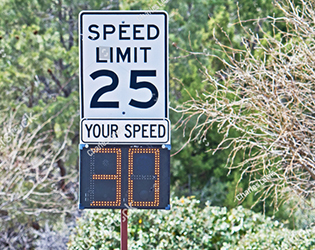Core Practices
Learn how three core practices inspired by global practices may be adapted to U.S. contexts to improve pedestrian safety.
Road Safety Audits
In the U.S., road safety audits (RSAs) are used to evaluate roadway safety and address issues for all users, but they are not consistently applied across transportation projects and often conducted on an ad hoc basis. Most agencies do not have formal RSA programs with established training, certification, or oversight, limiting their application as a proactive safety tool.
By formalizing RSAs as a required step in project planning and delivery, and as a continuous process, there is an opportunity to embed safety into every stage of roadway development. A standardized and institutionalized RSA process could make road safety considerations a proactive component through all project phases, from planning to design, operation, and maintenance. This approach provides a “check and balance” to project design teams, helping to reduce risks and improve safety for all users.
Next Steps for Institutionalizing Road Safety Audits:
- Institutionalize RSAs as a continuous process throughout all project lifecycles – Integrate RSAs as a continuous process through the entire project delivery, from planning and design to operation and maintenance.
- Establish a common process for RSAs – Develop a standardized program that includes training and certification for RSA specialists, along with oversight mechanisms to support a consistent and continuous process across agencies.
- Expand multimodal safety considerations into RSAs – Integrate multimodal road user safety assessments into RSAs to evaluate the needs of all road users.
People-Centered Design (Movement and Place Framework)
In the U.S., transportation planning often prioritizes vehicle movement, with roadways categorized based on motor traffic needs rather than the broader context of land use or the safety of all users. Additionally, road classifications and designs are sometimes developed independently by various agencies, which can make it challenging to align transportation systems with broader community goals. This approach can create gaps between roadway design and safety, especially as land use evolves.
By rethinking how roadways are planned and classified, there is an opportunity to create transportation systems that prioritize safety, connectivity, and multimodal travel. This includes aligning roadway design with community goals, addressing gaps in multimodal infrastructure, and ensuring decisions are informed by a shared understanding of transportation and land use needs.
Next Steps for People-Centered Design:
- Establish a common basis for decision-making – Reevaluate how roadways are classified to reflect land use context and community goals.
- Consider all modes – Develop tools and frameworks to align transportation planning with multimodal priorities for safe and efficient travel for all users.
- Coordinate the transformation of transportation and land use – Support planning and implementation efforts by providing the tools, data, and strategies needed to address both current and future needs.
Speed Management
In the U.S., traditional methods for setting speed limits in speed zones have relied on observed operational speeds such as the 85th percentile. Establishing speed limits based on how fast the majority of drivers are traveling can result in speed limits that exceed the safe thresholds for pedestrians, bicyclists, and other road users. Additionally, speed management practices frequently lack alignment with land use, community goals, and multimodal safety needs.
By adopting a more holistic approach to speed management, speed limit setting can become a tool for improving safety, aligning roadway functions with land use context, and encouraging safer, more comfortable travel for all modes. Integrating speed management into the planning and design process can help agencies proactively incorporate safety considerations and support a Safe System approach.
Next Steps for Improving Speed Management Practices:
- Develop context-sensitive speed-limit setting tools – Create guidance and methodologies that link speed limits to roadway function, land use context, and community safety goals. Position speed management as a continuous process integrated across network planning and design.
- Incorporate speed management into roadway design – Tie speed management practices directly to roadway classification and design processes, so that physical road features such as providing appropriate degrees of separation based on vehicular speeds and volumes support safer travel across all modes.
- Measure and evaluate performance – Use metrics that track adjustments for safer speeds and assess their impact on roadway safety, particularly for multimodal contexts.


